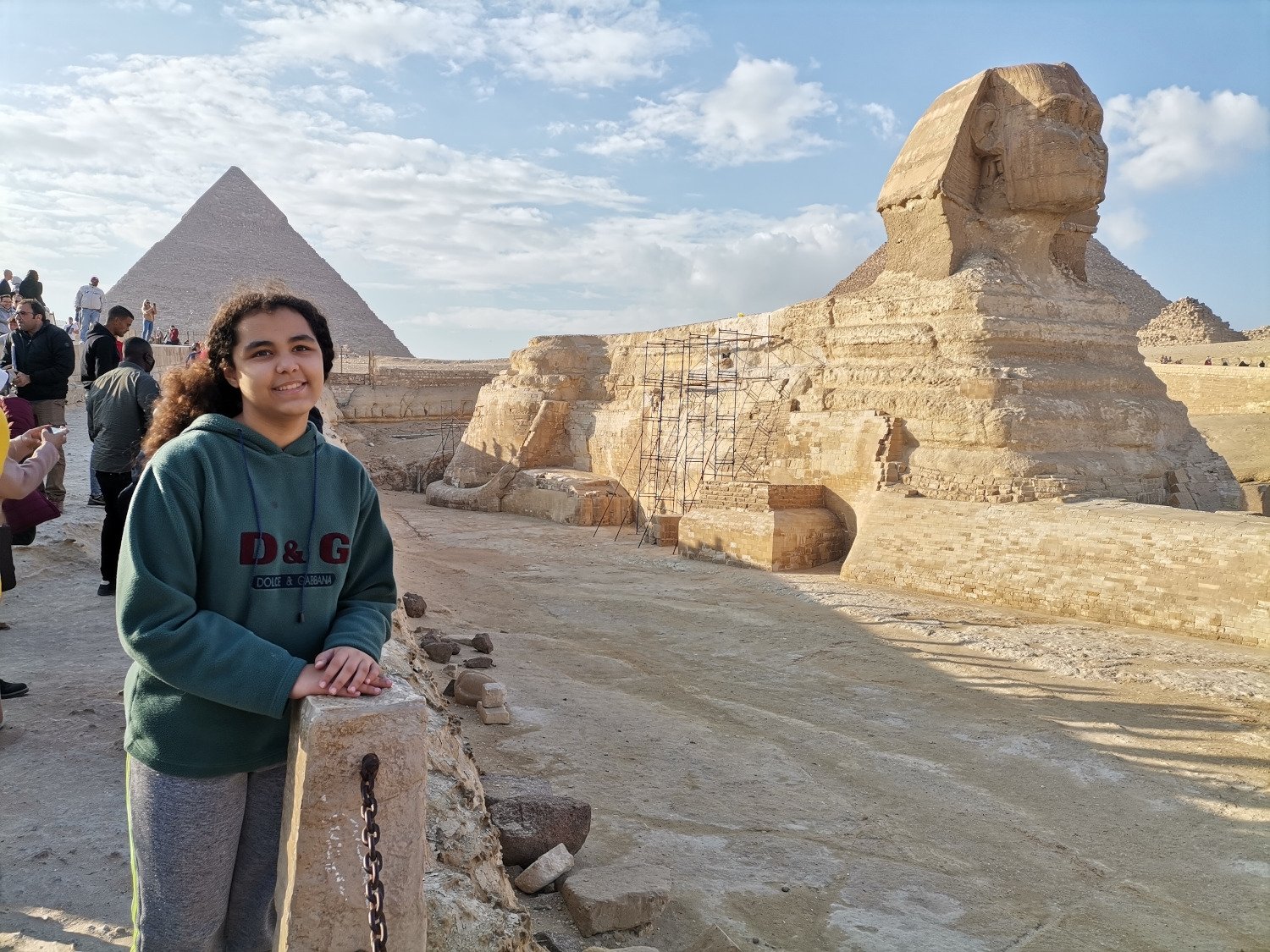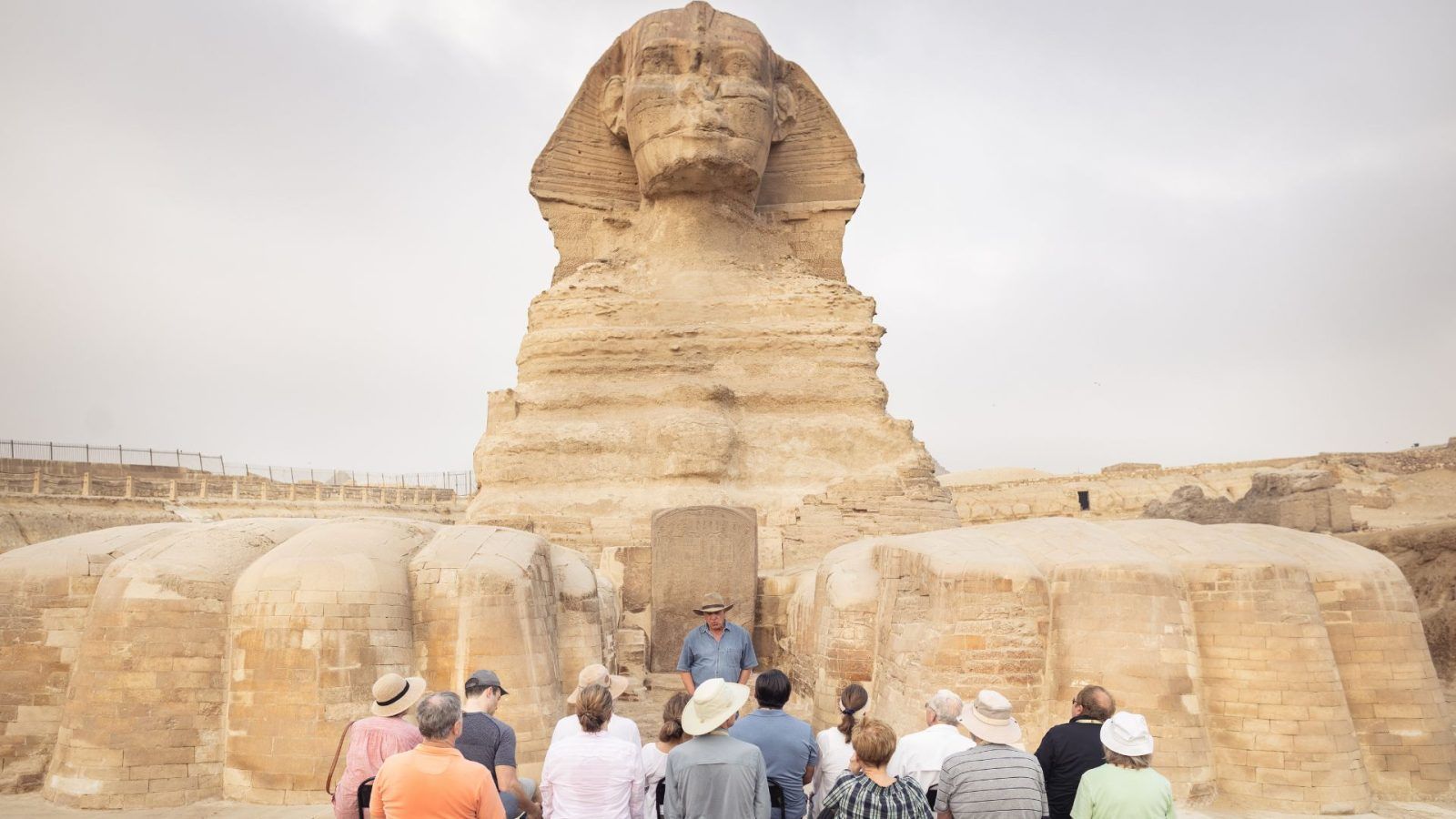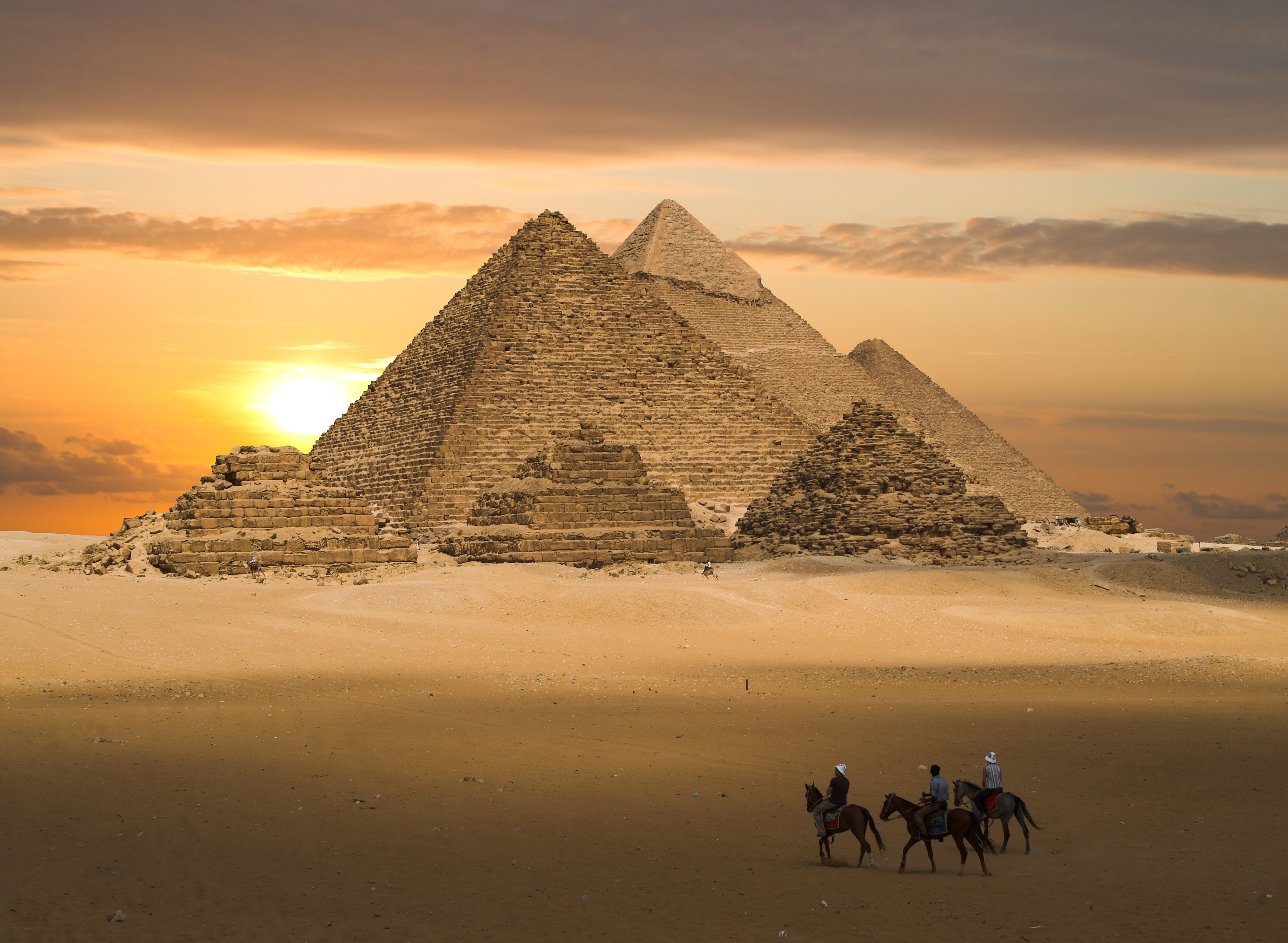Aussie Wanderlust: The Definitive Guide to Sphinx Tours in Egypt

Overview of Sphinx Tours in Egypt
The majestic Sphinx of Giza stands as an enduring symbol of ancient Egypt, steeped in rich history and grandeur. As you contemplate embarking on a tour, understanding the significance of this iconic monument will enhance your experience immensely.
History and significance of the Sphinx
The Great Sphinx, with its lion's body and human head, is believed to have been constructed during the reign of Pharaoh Khafre around 2500 BC. This incredible structure is not only a testament to the architectural prowess of the ancient Egyptians but also serves as a guardian of the nearby Giza Plateau, which houses the famous pyramids.
- Symbolism: The Sphinx is thought to represent strength and wisdom, making it a pivotal figure in Egyptian mythology.
- Historical Insight: Over the centuries, it has faced challenges from natural erosion and human impact, leading to various restoration efforts that only testify to its importance.
Popular Sphinx tour packages
Many travel agencies offer a variety of Sphinx tour packages tailored to suit different preferences. Some of the most popular tours include:
- Half-day guided tours: Perfect for those with limited time, these tours provide a brief yet enriching overview of the Sphinx and its surroundings.
- Full-day excursions: These packages typically include visits to the pyramids and museums, allowing for a deeper understanding of ancient Egyptian culture.
- Private and luxury tours: Ideal for a more personalised experience, these can be customised according to your unique interests.
Benefits of embarking on a Sphinx tour
Choosing to embark on a Sphinx tour comes with a host of benefits, including:
- Cultural immersion: Engage with Egypt's fascinating history and learn about the significance of its structures.
- Skilled guides: Insightful explanations from knowledgeable guides help you appreciate the monument's history even more.
- Breathtaking views: Experience the awe-inspiring sights that surround the Sphinx, including the Great Pyramids and the expansive desert landscape.
In exploring these aspects, you're sure to deepen your appreciation for one of the world's most enigmatic sculptures. So, pack your bags and prepare for an adventure that uncovers the mysteries of ancient Egypt!

Planning Your Sphinx Tour
Embarking on a Sphinx tour requires thoughtful planning to ensure you have the best possible experience. From knowing when to go to selecting the right package, it’s essential to consider various factors that can enhance your visit.
Best time to visit the Sphinx
Choosing the right time to visit can make a significant difference, especially given Egypt's climate. The ideal months for visiting the Sphinx are typically between October and April, when temperatures are milder and more conducive to exploration.
- Spring (March to May): This blooming season offers not only pleasant weather but also colourful landscapes surrounding the Sphinx.
- Autumn (September to November): Similar to spring, the temperatures are comfortable, allowing for extended visiting hours.
Avoid the peak summer months (June to August) when heat can be intense, making sightseeing strenuous.
Booking options for Sphinx tours
When it comes to booking your Sphinx tour, you have a range of options to suit your preferences:
- Online Booking: Many travel companies facilitate quick online reservations, often offering packages that combine visits to the Pyramids.
- Travel Agency: If you prefer a more hands-on approach, visiting local travel agencies can provide insights and customisation for your tour.
- Last-Minute Deals: Often, there are deals available for spontaneous travellers; however, booking in advance is usually recommended for popular tours.
Factors to consider when planning your tour
As you put together your itinerary, keep these factors in mind to enhance your visit:
- Group size: Determine whether you prefer a private tour for more personalised attention or a larger group tour for a lively atmosphere.
- Timing of visits: Consider early mornings or late afternoons to avoid crowds and catch the mesmerising light of the Sphinx.
- Cultural sensitivity: Understanding local customs will enrich your experience.
By carefully considering these aspects, you will ensure that your Sphinx tour not only meets your expectations but also exceeds them, creating unforgettable memories amidst the wonders of ancient Egypt!
Exploring the Sphinx and Surroundings
After planning your Sphinx tour, it’s time to dive into the exploration of this iconic monument and its captivating surroundings. Whether you're a history buff or a casual traveller, there’s much to uncover.
Guided vs. self-guided tours
One of the first decisions you'll face is whether to opt for a guided tour or explore on your own. Each option has its merits:
- Guided Tours: These tours often include expert guides who provide rich historical context and fascinating stories about the Sphinx and its significance. This can greatly enhance your understanding of what you’re seeing. Plus, guided tours often skip the queues, allowing you more time to soak in the sights.
- Self-Guided Tours: If you prefer a more personal experience, a self-guided tour allows you to explore at your own pace. You can spend extra time photographing the Sphinx or wandering through the surrounding desert. Just make sure to download a map and some historical resources to enrich your experience!
Highlighted features of the Sphinx
As you approach the Sphinx, several striking features demand your attention:
- Size and Scale: Standing at an impressive 20 metres high and 73 metres long, the Sphinx is one of the largest monolithic statues in the world.
- Expression and Detail: The enigmatic expression carved into the Sphinx's face draws many admirers and inspires countless theories about its original likeness.
- Missing Nose: The Sphinx’s missing nose is a subject of intrigue. Many legends surround its disappearance, adding to the monument's mysteries.
Adjacent attractions to visit during your tour
While the Sphinx is undoubtedly the star of the show, there are several remarkable attractions nearby worth exploring:
- The Great Pyramids of Giza: Just a short walk away, these wonders are a must-see, with their architectural perfection.
- The Solar Boat Museum: This museum houses a stunning ancient vessel that dates back to the reign of Pharaoh Khufu.
- The Grand Egyptian Museum: Though still under construction, this museum will showcase an incredible array of artefacts from ancient Egypt.
By coupling your Sphinx exploration with these adjacent attractions, you can create a rich tapestry of experiences that truly brings the history of ancient Egypt to life!

Immersive Experiences at the Sphinx
After diving into the historical and cultural marvels surrounding the Sphinx, you’ll likely want to deepen your connection with this iconic structure. Fortunately, there are various immersive experiences that can make your visit truly unforgettable.
Sunset and sunrise tours
Experiencing the Sphinx during sunrise or sunset is nothing short of magical. The changing light creates a stunning backdrop that enhances the monument’s grandeur, making every visitor feel as though they’ve stepped into a painting.
- Sunrise Tours: These early morning excursions allow you to witness the first rays of sunshine illuminating the Sphinx. The serene atmosphere, paired with the gentle morning light, creates a reflective experience that many find spiritually uplifting.
- Sunset Tours: There’s something enchanting about watching the Sphinx transition into shadows as the sun dips below the horizon. The vibrant hues of dusk paint the sky, providing a dynamic contrast against the ancient stone.
Special access tours
For those seeking a more exclusive experience, special access tours offer unique insights that regular tours may not cover. These might include:
- Entry to Restricted Areas: Some tours provide opportunities to access sections of the Sphinx and Giza Plateau not typically open to the public, allowing for a closer examination of the monument’s architecture.
- Early Entry Privileges: Beat the crowds and enjoy the Sphinx in relative solitude with guided early access tours that let you experience the site before it gets busy.
Interactive experiences for visitors
To engage visitors in a more dynamic way, several interactive experiences have been developed around the Sphinx:
- Photography Workshops: Capture stunning images with professional photography classes that provide tips on how to best frame the Sphinx against the breathtaking backdrop.
- Cultural Performances: Some tours include traditional performances or storytelling sessions, bringing the rich heritage of Egyptian culture to life right before your eyes.
These immersive experiences elevate a visit to the Sphinx beyond mere sightseeing, allowing you to forge a deeper connection with the ancient wonders of Egypt and appreciate the legends that have enveloped this iconic monument for centuries. So, consider arriving early or planning for a sunset to truly soak in the magic of the Sphinx!
Tips for a Memorable Sphinx Tour
To ensure your visit to the Sphinx is both enjoyable and enriching, it’s important to come prepared. By considering the right essentials and cultural etiquette, you can maximise your experience amidst these ancient wonders.
Packing essentials for the tour
What you bring along can greatly impact your comfort and enjoyment during your Sphinx tour. Here’s a handy checklist to consider:
- Water Bottle: Staying hydrated is crucial, especially in the Egyptian sun. Consider bringing a reusable water bottle, which can be refilled at designated points.
- Sunscreen: Protect your skin from the sun’s rays. A high SPF will help you avoid sunburn while you explore the Sphinx and surrounding sites.
- Comfortable Footwear: Expect to do a fair amount of walking, so wear sturdy shoes that will keep your feet happy.
- Light Layers: While the days can be hot, mornings and evenings might be cooler. A light jacket or shawl could be a smart addition.
- Camera: Capturing memories is essential! Whether it’s a smartphone or a professional camera, ensure you have something to document your adventure.
Cultural and etiquette considerations
As you immerse yourself in Egyptian culture, being mindful of local customs and etiquette is essential. Here are a few pointers:
- Dress Modestly: While Egypt is generally welcoming, modest dress is appreciated, especially in historical sites. Long pants and sleeved tops are advisable.
- Respect Local Customs: Take your time to learn some basic Arabic phrases – a simple “Shukran” (thank you) can go a long way!
- Photography Guidelines: Always ask before photographing locals. Some may prefer not to be photographed, so it’s best to respect their wishes.
Maximizing your experience at the Sphinx
To truly soak in the atmosphere and history of the Sphinx, consider these tips:
- Engage with Guides: If you opt for a guided tour, interact with your guide! They can share fascinating stories and insights that you wouldn’t find in a book.
- Take Your Time: Don’t rush your visit. Spend time simply sitting and absorbing the majesty of the Sphinx, taking in your surroundings.
- Plan to Unplug: While smartphone selfies are tempting, consider putting your phone down for a moment to fully immerse yourself in the experience.
By packing thoughtfully, respecting local customs, and engaging deeply with your surroundings, you’ll create lasting memories from your Sphinx adventure that extend far beyond the physical souvenirs. Enjoy your journey through history!

Preserving the Legacy of the Sphinx
As you explore the grandeur of the Sphinx, it’s essential to consider the ongoing efforts aimed at preserving this ancient wonder. The legacy of the Sphinx is invaluable, and it requires collective action to ensure it remains a source of inspiration for future generations.
Conservation efforts at the Sphinx
Conservation efforts have become increasingly vital as environmental factors and human activities threaten the Sphinx. Multi-disciplinary teams work tirelessly to protect and restore this iconic monument:
- Regular Inspections: Experts conduct frequent assessments to identify any signs of erosion, cracking, or other damage. Early intervention can prevent more extensive damage.
- Restorative Techniques: State-of-the-art techniques, such as the use of laser scanning, help understand the Sphinx's deteriorating structure better, leading to informed restoration decisions.
- Documentation Initiatives: Collaborations with archaeologists and historians aim to document the Sphinx’s history and condition, creating a digital archive for reference.
Sustainable tourism practices
Sustainable tourism is crucial for the preservation of the Sphinx and surrounding sites. It fosters an eco-friendly approach that benefits both the environment and the local community:
- Controlled Visitor Access: Limiting visitors during peak hours helps reduce wear and tear on the structure and nearby habitats.
- Eco-Friendly Tours: Tour operators are increasingly implementing practices such as solar-powered vehicles or encouraging group tours, which help decrease carbon footprints.
- Education Initiatives: Many organisations work to educate tourists on the importance of preserving historical sites, raising awareness on how small actions can have a big impact.
How visitors can contribute to preservation
You, too, can play a pivotal role in preserving the Sphinx during your visit. Here’s how:
- Follow the Guidelines: Respect posted signs about restricted areas and take guidance from tour operators to avoid damaging the site.
- Leave No Trace: Carry out any waste you bring and avoid littering the area. Using eco-friendly products can make a significant difference.
- Support Local Businesses: When you buy souvenirs or enjoy meals, opt for local artisans and businesses, ensuring your spending contributes to the economy while fostering preservation.
By actively engaging in these efforts, you not only enhance your own experience but also play your part in safeguarding the legacy of the Sphinx for the generations that follow. Remember, every little action counts towards a larger goal!
Conclusion
As we wrap up this exploration of Sphinx tours in Egypt, it’s essential to reflect on the enriching experiences and invaluable insights gathered throughout the journey.
Recap of key takeaways
Here are the key takeaways to keep in mind as you plan your visit to the Sphinx:
- Timing is Everything: The best times to visit the Sphinx are during the cooler months from October to April, so plan accordingly for a comfortable experience.
- Engagement is Key: Choosing between guided and self-guided tours can shape your experience. Engage with knowledgeable guides or use mobile resources for a more personalised journey.
- Immerse Yourself: Consider special tours, like sunrise and sunset experiences, which add a magical touch to your visit, making it even more memorable.
- Protecting Heritage: Understanding conservation efforts and sustainable tourism practices can elevate your appreciation for the Sphinx and enable you to contribute positively to its preservation.
Inspiring readers to explore Sphinx tours in Egypt
The Sphinx is more than just a monument; it’s a gateway into the rich tapestry of ancient Egyptian history and culture. Each visit tells a story not just of the past but also of the future, urging us to cherish and protect these historical treasures.
Imagine standing before this magnificent structure, feeling the weight of history as you explore its surroundings. Whether you’re gazing at the intricate carvings, participating in a cultural performance, or simply basking in the desert sunset, you'll create lasting memories that inspire curiosity and wonder.
So, as you contemplate your next travel adventure, consider diving into the depths of Egypt's history through a Sphinx tour. This iconic monument is waiting to share its stories with you, ensuring that your journey is not just about sightseeing but rather an enriching experience that connects you to the heart of an ancient civilisation.
Embrace the adventure, and let the Sphinx reveal its secrets!
